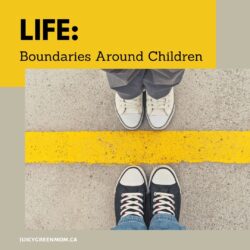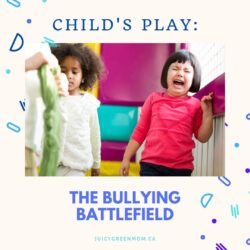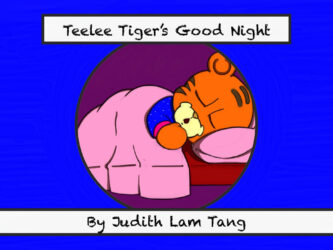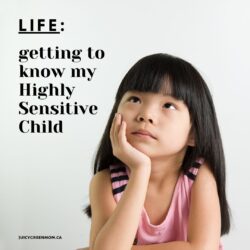RAVE: 5 Ways INSIDE OUT Has Helped My Highly Sensitive Child
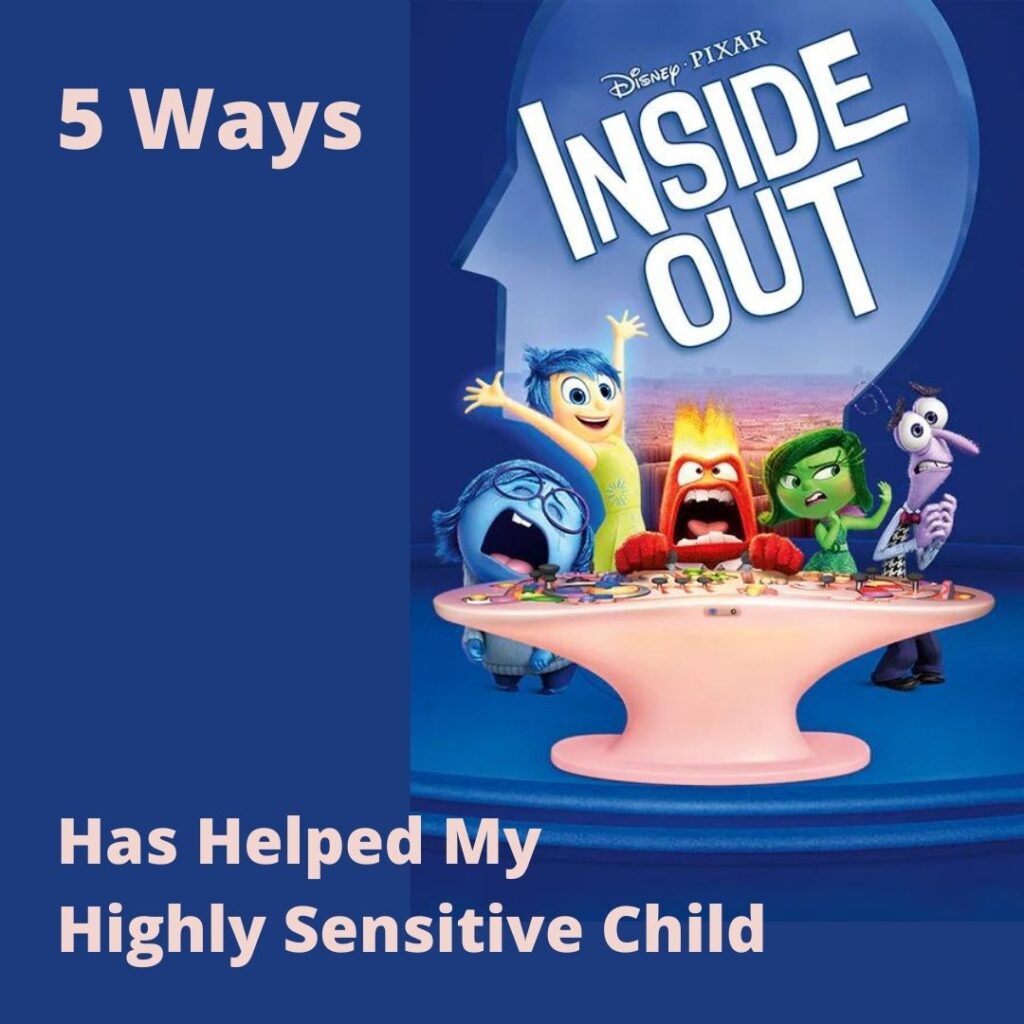
I know not everyone loves animated movies, but I do. Perhaps it comes with the territory of being married to a 3D artist, but I have often found that animated movies resonate more deeply with me than live-action movies. It may just be that people who get involved with animated movies have amazing imaginations and wonderful storytelling abilities. This is definitely true of Disney Pixar’s latest movie, Inside Out, which tells the story of the emotion characters inside an 11-year-old girl’s head. My almost-kindergartener daughter was drawn to the previews and books from the movie even before we watched it, so I knew it was going to be a game-changer for us. It really was.
As a highly sensitive child, my daughter has experienced heightened anxiety all of her life. Even though she now has the language skills to express herself, when she is overcome with emotions she is often unable to express them or doesn’t want to. From the time I figured out that she was highly sensitive, I have been trying to help her cope. I don’t believe my husband and I have ever given her reason to feel ashamed of her feelings, but I think she may feel this way nonetheless. Hence, telling us “I don’t feel anything” when she is clearly upset. I’ve been struggling with how to respond when she says this.
Then we went to watch Inside Out. Here’s how it has helped.
1. It showed that everyone has the same feelings inside of them.
Even though the movie was focused on the emotions of Joy, Sadness, Fear, Disgust, and Anger inside Riley’s head, it also showed different iterations of those same emotions in other characters’ heads, like Riley’s parents. (During the credits, you see these emotions in many different people’s heads – and animals too, like cats and dogs.) This has really helped us talk about the fact that everyone experiences the full gamut of emotions so that my daughter knows she is not alone when she feels overcome with anxiety. It has allowed us to talk about different situations where we have all experienced certain feelings, and how this is completely okay.
2. It showed that all feelings are necessary and beneficial.
In Riley’s head, Joy was the emotion that was most often in charge, and she struggled to keep Sadness from bringing Riley down. But as the movie progressed, we were led to see that Sadness wasn’t just an unwanted feeling. Rather she was completely necessary, and without her, Joy couldn’t truly function as Joy. My daughter really struggles when she sees me sad or crying. She gets agitated and tells me I can’t be sad – I think because it makes her feel like her world is collapsing. After watching the movie, though, we are more able to talk about how everyone feels sad sometimes, and that we don’t need to try to ignore sadness or make it go away.
3. It provided a great color analogy for different feelings.
Each of the emotions in the movie is associated with a color: Joy is yellow, Sadness is blue, Anger is red, Disgust is green, and Fear is purple. This has opened a dialogue for talking about other feelings and related feelings. Anxiety is the big one for us, so we talked about what color it should be, and how it’s related to the other feelings. Since my daughter loves rainbows (what kid doesn’t like rainbows?), the analogy of feelings as colors has also driven home the point that all these different feelings exist, just like different colors do, and they are all part of the rainbow of life.
4. It personified emotions so that children can relate to them more easily.
The personification of Joy, Sadness, Anger, Fear, and Disgust automatically makes you become drawn to one character or another. Emotions are very complex, and I really believe that my daughter struggles to figure out what’s going on inside her when she’s experiencing different emotions. The emotional characters in the movie allowed her to relate better to what these emotions are like, and how they’re associated with different behaviors and situations.
5. It has opened the door for talking about feelings.
I think emotional intelligence is important for any child, but especially for a sensitive child. Even though I have attempted to educate my daughter about feelings and talk openly about them, I never found a solid, concrete way to explain the concepts. This movie really did that for me. It has provided a starting point for exploring feelings and talking about them throughout different activities in the day.
We’ve started getting quite a few Inside Out books to support the feelings talk, and since my daughter loves to read, these have been just perfect for her. There are LOTS of choices! Some of our favorites:




What did you think of Inside Out?
(Disclosure: I am a participant in the Amazon Services LLC Associates Program and the Amazon.com.ca, Inc. Associates Program, affiliate advertising programs designed to provide a means for sites to earn advertising fees by advertising and linking to amazon.com & amazon.ca. This post contains affiliate links. If you choose to purchase products via these links, a small percentage of the sale will be given to me at no extra cost to you. Thanks for supporting juicygreenmom.ca!)






